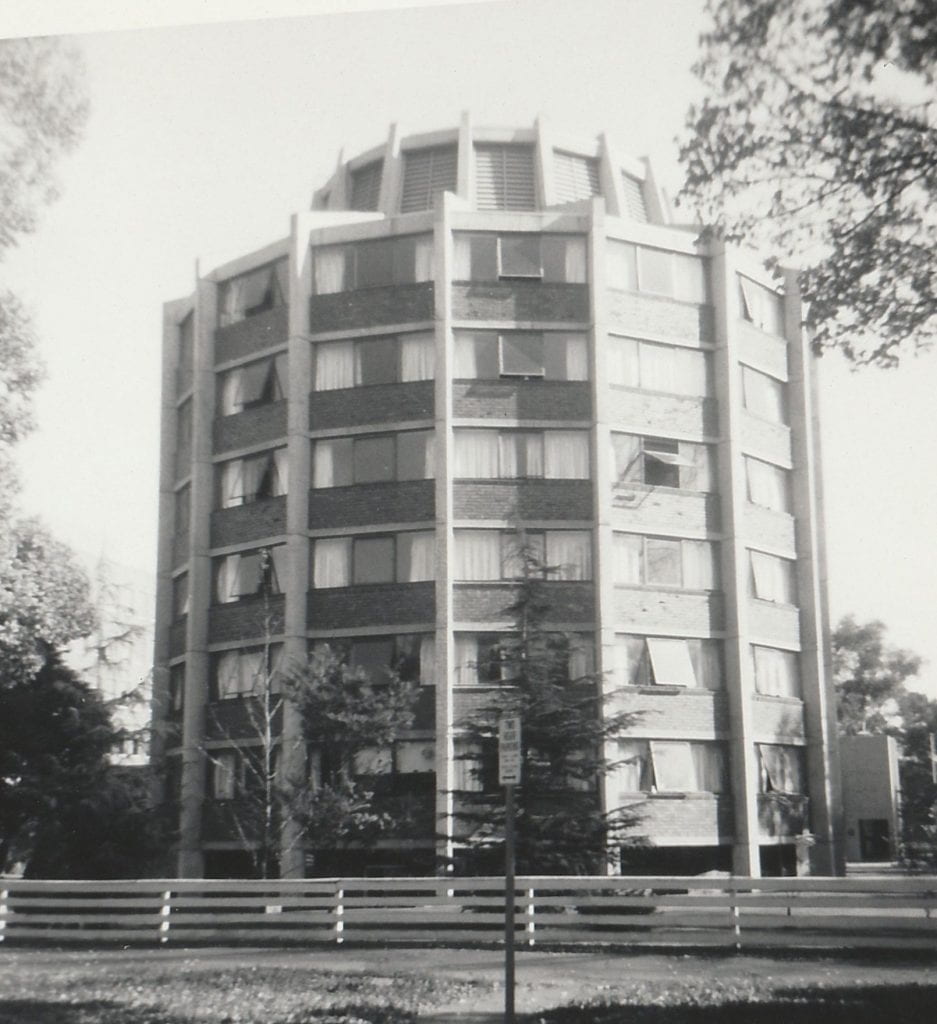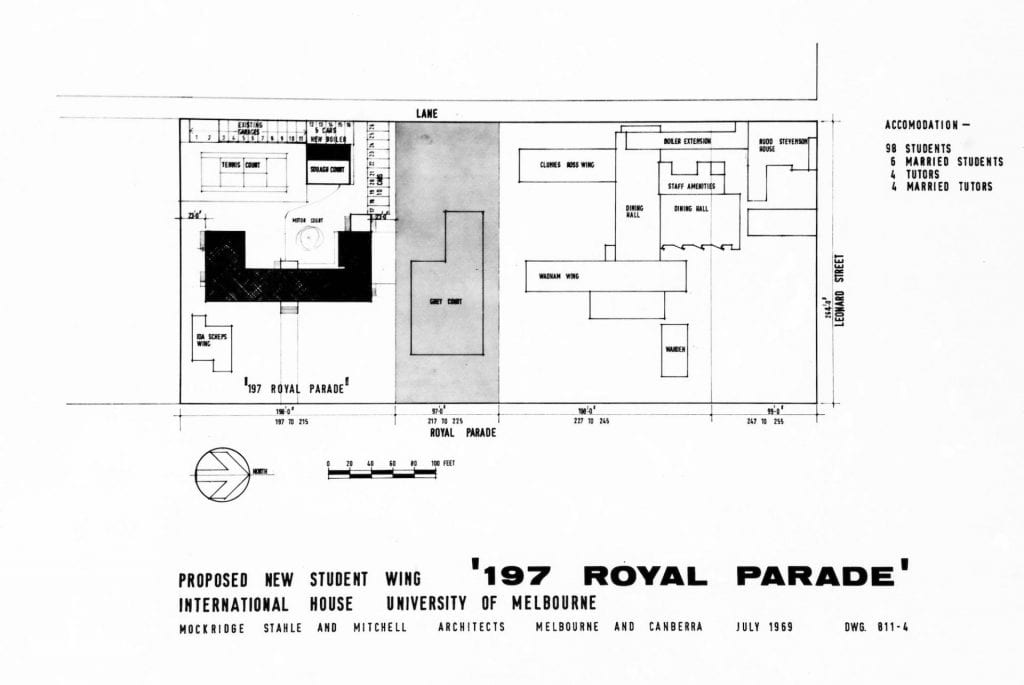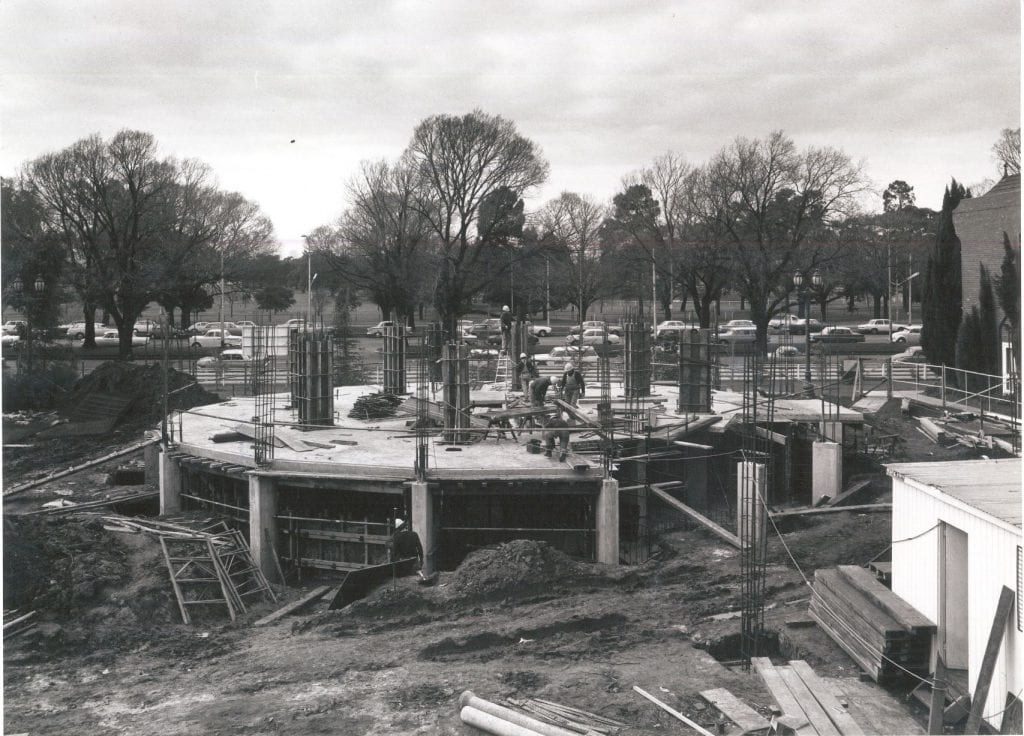Fifty years of Scheps
Larika Desai
Larika Desai was a resident of International House from 2018 to 2020. In 2021, she undertook research into the Scheps Wing as part of an industry internship for the Master of Urban and Cultural Heritage at the University of Melbourne.

As early as 1967, Melbourne newspapers started publishing articles with appeals and particulars of a fundraiser for a new wing at International House (“Around the town,” 1967). Initially the House engaged architects Mockridge, Stahle and Mitchell (MS&M) for the design and construction of the wing. MS&M proposed a five-storey, slab-like, rectangular modernist block that was similar in style to the Clunies and Wadham wings. The intent was most likely to maintain a uniform external form for all International House wings. Although their design had reached an advanced stage, the International House Council had to make the decision of not advancing with the project because of budgetary constraints (International House Council, 1971a).

Tenders were sent out, and construction company Civil & Civic Pty Ltd was approached. Civil & Civic returned a sensible design, including furnishings, which was cost efficient and quick to build (International House Council, 1971a). Their design was the seven-storey, sixteen-sided modernist tower structure that we all recognise as Scheps.

The minutes of the International House Council record that the Scheps Wing was named after Ida Scheps (1891–1962) under the wishes of her husband the businessman Theodor Alexander Scheps, who was a key International House benefactor (Dimmick, 1970).

The Civil & Civic scheme was compact and freed up space to accommodate future additions to the House. The polygonal shape of the wing allowed for a radial distribution of rooms, with each room having access to a window and a view outward. Interviews with former International House residents reveal that for decades, male and female students lived separately on alternate floors in Scheps. According to Vi Peterson, ‘everyone wanted to live in Scheps as it was the tallest building at the time’ (V. Peterson, personal communication, September 2021). Back then the student-run shop was situated in the basement of the wing. Scheps also had an annexe on the ground floor that according to former resident Anton Alers was a ‘multipurpose common room with a kitchenette attached, used for orientation week activities and social gatherings, and was subsequently transformed into a gymnasium until that facility was moved’ (A. Alers, personal communication, September 2021).

Scheps was officially opened by diplomat Sir Keith Waller on 6 May 1972. Since then, Scheps has undergone several architectural changes. Some of the known changes are:
- The central chimney and trash chute have been blocked off.
- The annexe was removed to make way for the George Hicks Building.
- In 2020, the rooms on the first and fifth floors were retrofitted to include kitchenettes.
The construction of Scheps was accompanied by a landmark decision passed by the International House Council. In June 1971, it resolved that ‘women students, both Australian and overseas, be admitted into residence in 1972’ (International House Council, 1971b; see too Larkins, 2018, p. 79). International House became the first University of Melbourne college to allow women residents on equal footing as men. The Scheps Wing played a major role in accommodating this highly-anticipated increase in the number of students.
Scheps is testament to some of the broader political, social and economic changes occurring at the time of its construction. For fifty years, Scheps has been the setting for incredible interactions between students – men and women, local and international – and continues to represent the multiculturalism, equality and harmony that International House stands for.
References and further reading
Around the town (1967, June 20). The Age, p. 17.
Dimmick, S. G. McL. (1970, September 1). Mr Theodor Alexander Scheps, International House Council, Meeting No. 3, 28 September 1970. International House Archives.
International House Council (1971a). Minutes of Meeting No. 1, 22 March 1971. International House Archives.
International House Council (1971b). Minutes of Meeting No. 2, 28 June 1971. International House Archives.
Larkins, F. (2018). International House Melbourne: Sixty years of fraternitas. Melbourne University Publishing.
7-storey plan for varsity (1971, June 7). The Age, p. 20.